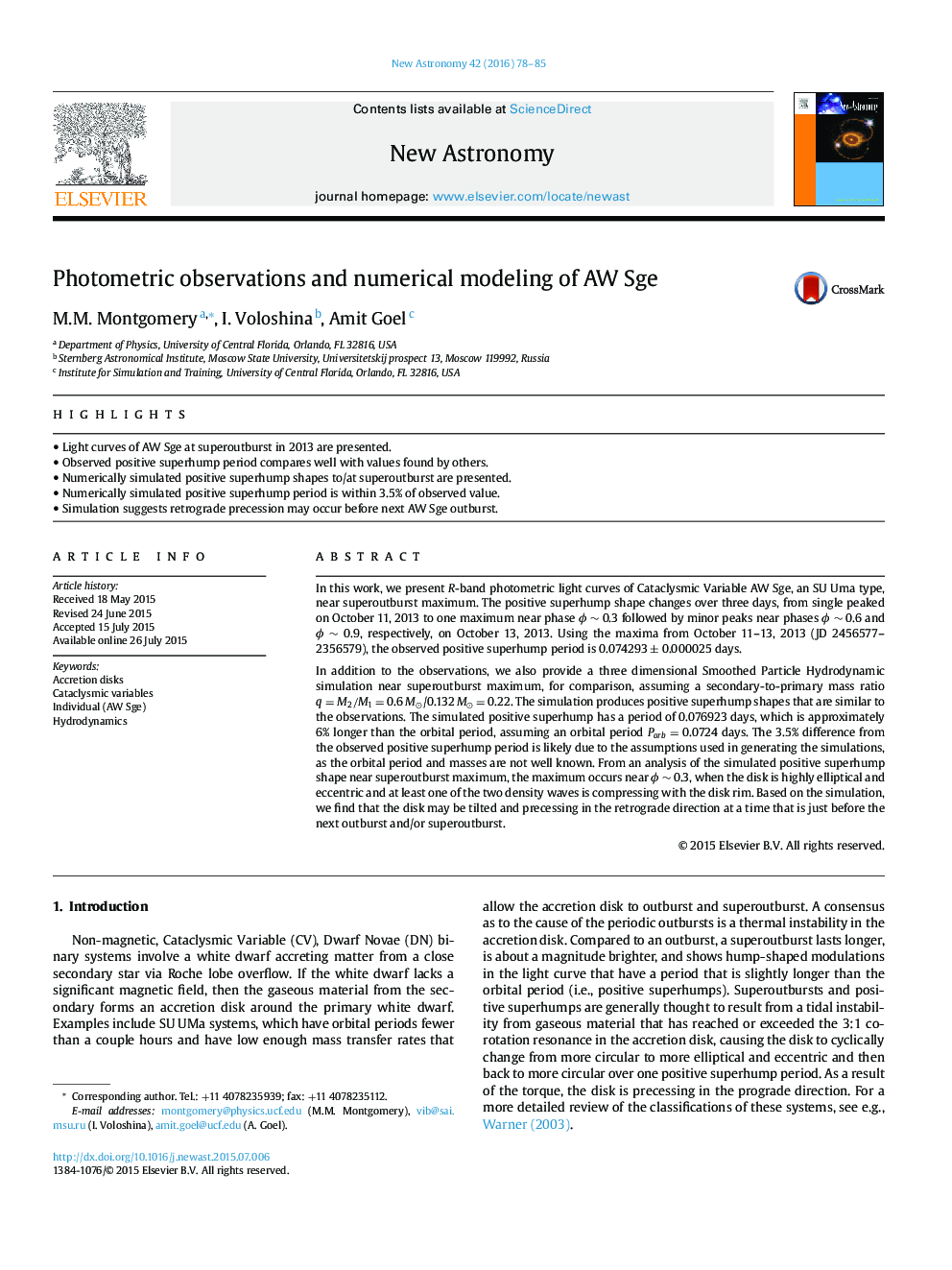| Article ID | Journal | Published Year | Pages | File Type |
|---|---|---|---|---|
| 1778741 | New Astronomy | 2016 | 8 Pages |
•Light curves of AW Sge at superoutburst in 2013 are presented.•Observed positive superhump period compares well with values found by others.•Numerically simulated positive superhump shapes to/at superoutburst are presented.•Numerically simulated positive superhump period is within 3.5% of observed value.•Simulation suggests retrograde precession may occur before next AW Sge outburst.
In this work, we present R-band photometric light curves of Cataclysmic Variable AW Sge, an SU Uma type, near superoutburst maximum. The positive superhump shape changes over three days, from single peaked on October 11, 2013 to one maximum near phase ϕ ∼ 0.3 followed by minor peaks near phases ϕ ∼ 0.6 and ϕ ∼ 0.9, respectively, on October 13, 2013. Using the maxima from October 11–13, 2013 (JD 2456577–2356579), the observed positive superhump period is 0.074293 ± 0.000025 days.In addition to the observations, we also provide a three dimensional Smoothed Particle Hydrodynamic simulation near superoutburst maximum, for comparison, assuming a secondary-to-primary mass ratio q=M2/M1q=M2/M1 = 0.6 M⊙/0.132 M⊙ = 0.22. The simulation produces positive superhump shapes that are similar to the observations. The simulated positive superhump has a period of 0.076923 days, which is approximately 6% longer than the orbital period, assuming an orbital period Porb = 0.0724 days. The 3.5% difference from the observed positive superhump period is likely due to the assumptions used in generating the simulations, as the orbital period and masses are not well known. From an analysis of the simulated positive superhump shape near superoutburst maximum, the maximum occurs near ϕ ∼ 0.3, when the disk is highly elliptical and eccentric and at least one of the two density waves is compressing with the disk rim. Based on the simulation, we find that the disk may be tilted and precessing in the retrograde direction at a time that is just before the next outburst and/or superoutburst.
